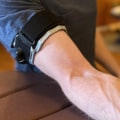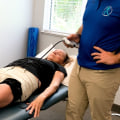People with a family or personal history of bleeding disorders, or level 1 hypertension, may not be safe to complete a bfr training protocol. This is the first and most obvious concern with implementing BFR. Does placing a tourniquet and restricting blood flow increase the risk of clotting? Fortunately, several studies have examined these issues and all support that BFR does not increase the risk of blood clots. Both blood flow restriction training and intense endurance training are associated with the release of several anticoagulant factors (Jarrett 200).
Studies have shown that there are no increases in clots when implementing BFR training programs (Hylden 201). A lot of concerns occur to me when you think about restricting blood flow. There are few real risks that accompany occlusion training, as long as it is done safely with help. Most studies show that occlusion training is just as risky as traditional exercise.
Although it is not common, it is possible to suffer serious muscle damage from improper BFR training. This includes rhabdomyolysis, skeletal muscle rupture (. Rhabdomyolysis causes the release and accumulation of myosin, a protein, in the blood. Ultimately, this can cause kidney damage.
Symptoms include decreased volume of urine and dark urine, weakness, muscle stiffness and pain, joint pain, and fatigue. The short answer is no, you don't need a certification to use blood flow restriction training. The BFR is within the scope of practice for both physical therapists and athletic trainers. Local authorities may have different guidelines, so it's always best to review your state's practice laws to make sure you can use BFR.
Yes, patients can use BFR at home once parameters have been established. To analyze how the BFR technique has been applied by professionals working in the clinical area and the prevalence of side effects (SE) resulting from the use of this technique. Number of repetitions (A), intensity (B), number of sets (C) and recovery interval between sets (D) used in RT + BFR. There is evidence that BFR training can boost athletic training and may even help patients with chronic pain or other conditions build muscle more easily, provided it is done correctly.
Blood Flow Restriction training has been gaining popularity and is being used more and more, which means that more and more questions arise about BFR training. We suggest that it is the professional's responsibility to maintain the integration of BFR training with practices that align with research to minimize the risk of unnecessary adverse events. BFR professionals can overcome this barrier by understanding the different BFR technologies currently available. That's why we want to help you quickly and easily learn everything you need to know to get started with BFR training.
We proposed this clinical decision-making funnel to address one of the biggest perceived barriers to the successful integration of BFR training into the rehabilitation environment. The risk of acquiring rhabdomyolysis after BFR exercise appears to be extremely rare according to the current state of the literature (3, 10) and is likely to only be elevated during initial training sessions before acquiring the effect of repeated attack (8.popularity in fitness and rehabilitation environments due to its role in optimizing muscle mass and strength, as well as cardiovascular capacity, function and a host of other benefits. As BFR exercise is more routinely used in clinical settings, professionals need a working knowledge of how intervention influences hemodynamics. For more information on BFR exercise and the potential risk of VTE after orthopedic surgery, the reader is referred to Bond et al.
Participants answered a self-administered online questionnaire consisting of 21 questions related to the professional profile and methodological and SE aspects of the BFR technique. During BFR training, the tight-fitting band or strap on the affected limb restricts blood flow in (which carries oxygen) and out (which carries lactic acid and other wastes from muscle activity) below the compression level. . .



Leave Reply